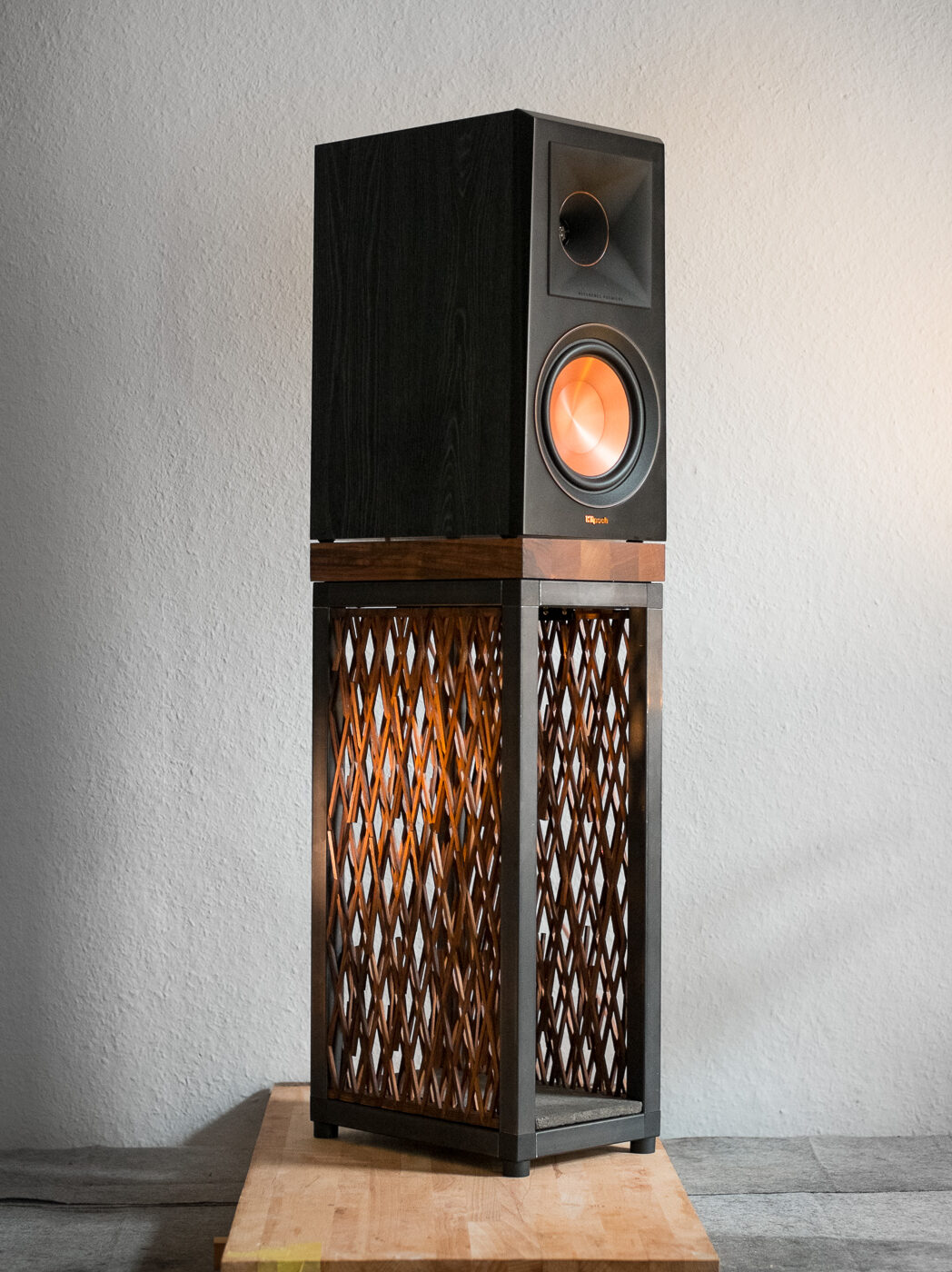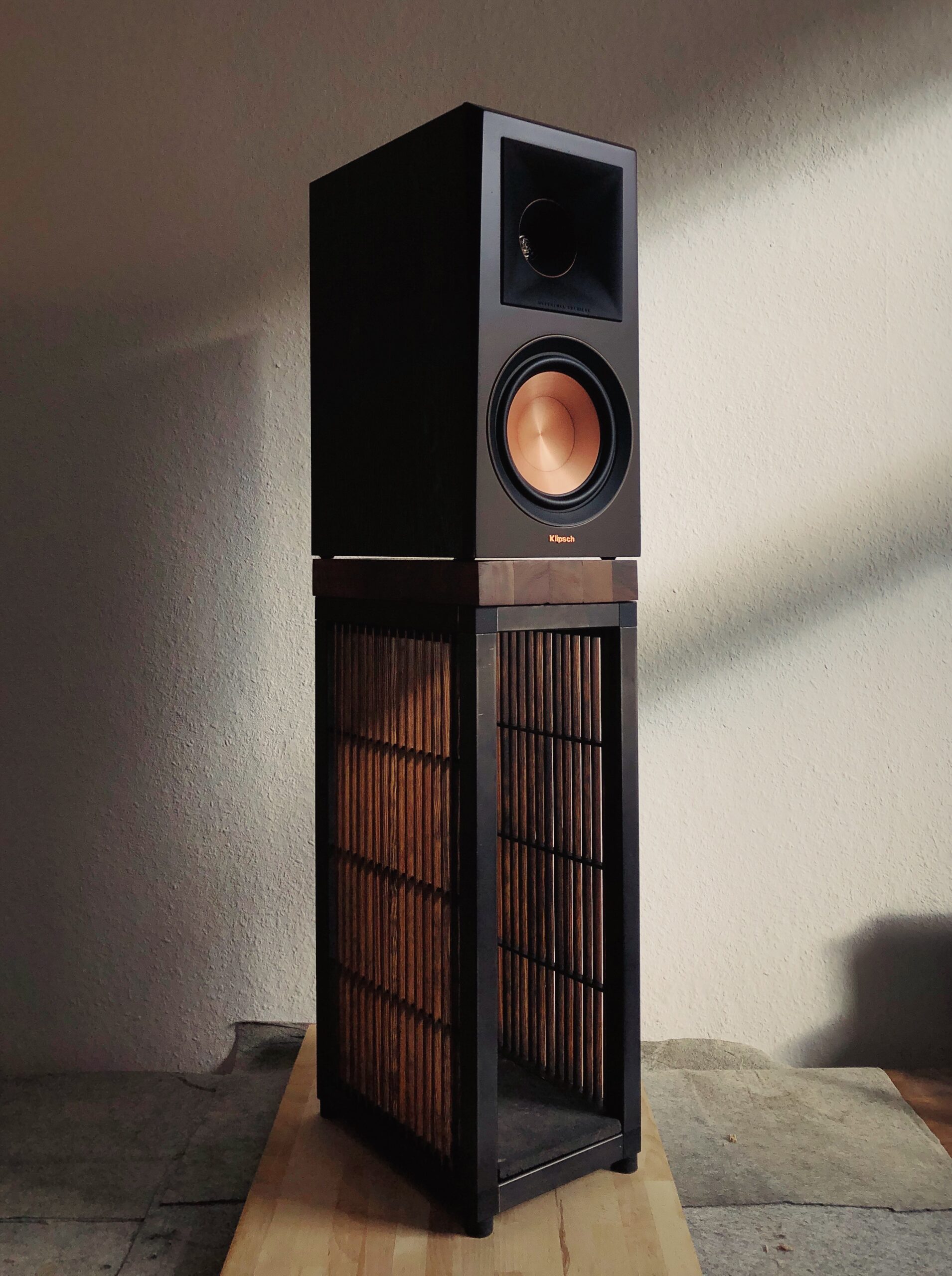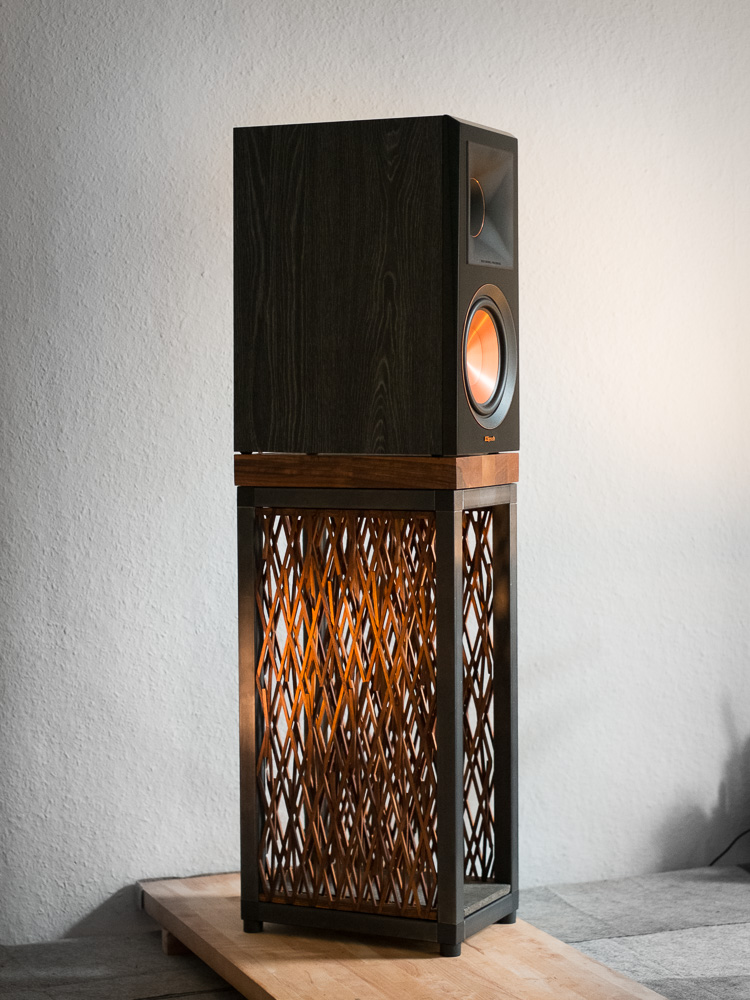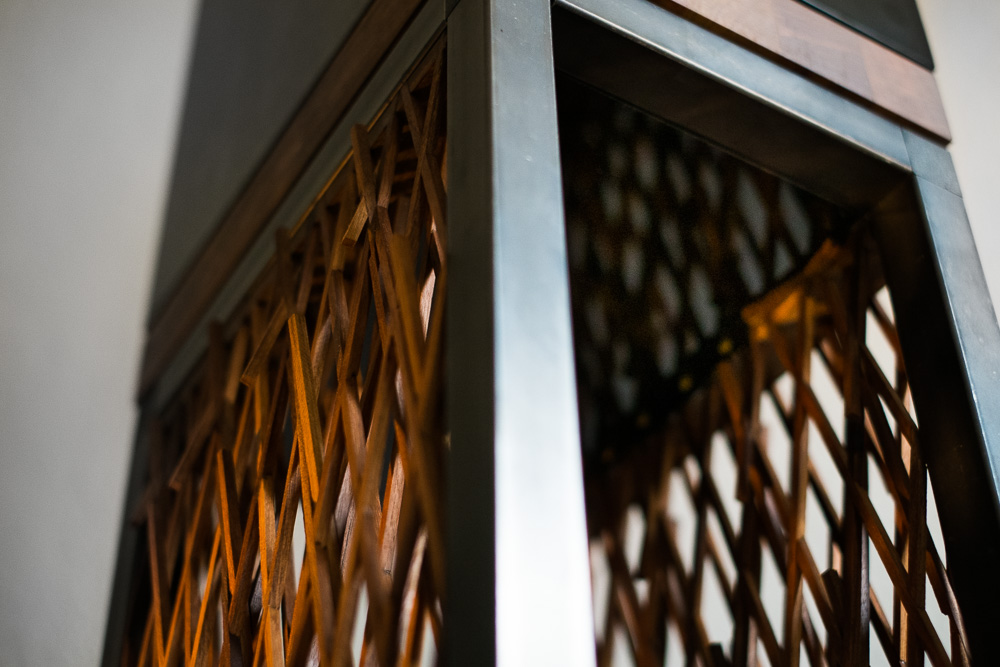

Some time in the fall of 2019 I decided I needed stands for my new Klipsch bookshelf speakers. After checking the options, I quickly came to the conclusion: “Nah, I can do this myself for cheap” (spoiler alert: I was wrong, at least about the latter part) – and thus laid down the foundation for what would be an unexpectedly tedious yet mostly exciting path I was stumbling along on. I’ve learned a lot about woodworking, as well. Here are some insights about the thoughts behind the stands, as well as how I actually built them.

Specifications and thoughts
The two speaker stands are different, but follow the same idea and material considerations: A heavy blackened steel frame, joined together by glass fibre enforced, solid epoxy-filled joints (ideal would have been welding). A custom poured concrete base sits in the bottom of the frame to add actual weight without adding visual weight. Adjustable dampening feet for better acoustic isolation are screwed right into the steel frame. The platform on which the speakers sit is made from solid 4 cm thick walnut. Black acrylic glass hides a narrow space under the walnut, into which lights are installed to illuminate the merely decorative wooden side panels of the two speaker stands, which are also their main difference.

Architectural side panels
The side panels/walls are inspired by Japanese lattice work and architecture. For speaker stand “Type EZ” the walls are built in a straightforward and easy grid. “Type KK” is heavily inspired by Japanese architect Kengo Kuma’s Sunny Hills building façade, a complex array of 3‑dimensionally connected wood beams. This right here was the real challenge and labor – from figuring out how to do it to cutting hundreds of wood joints at sub-millimeter precision, with hand tools.